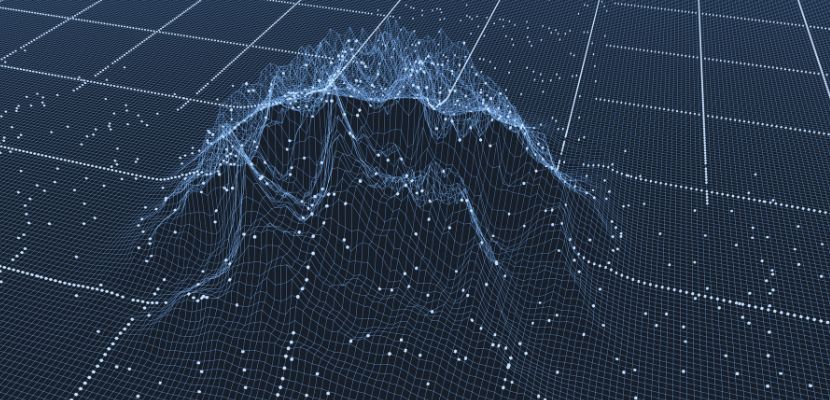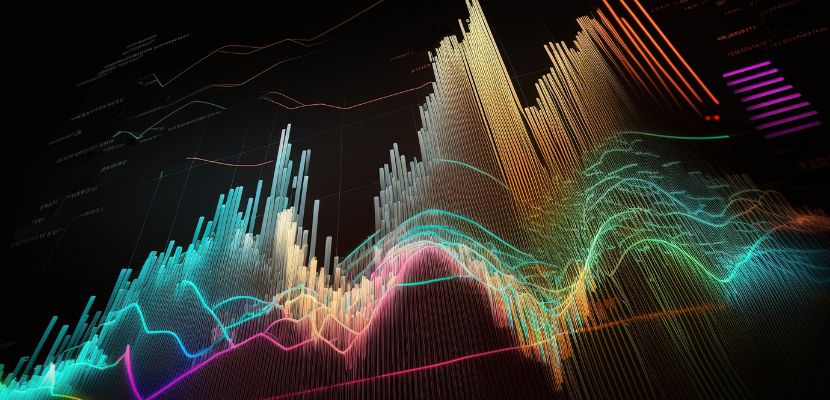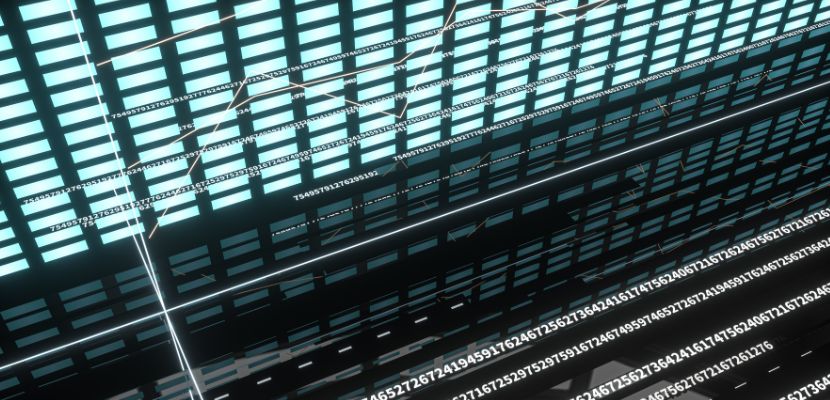Computer vision is a field of computer science and artificial intelligence that enables computers to interpret and understand visual information from the world, such as images and videos.

What Is Computer Vision?
Computer vision is a multidisciplinary area of study within artificial intelligence that focuses on enabling machines to analyze, process, and extract meaningful information from visual data such as digital images, video frames, or real-time camera feeds. It involves the development of algorithms and models that allow computers to replicate aspects of human visual perception, including object recognition, scene understanding, motion tracking, and image segmentation.
Computer vision systems rely on a combination of mathematical techniques, machine learning, deep learning, and image processing to interpret visual content, identify patterns, and make predictions or decisions based on that data. These systems can handle tasks ranging from simple image classification to complex real-time analysis, allowing for a wide range of applications in fields such as healthcare, automotive, manufacturing, security, and robotics.
The ultimate goal of computer vision is to enable machines to gain a high-level understanding of their visual environment and to interact with it in a meaningful and autonomous manner.
Is Computer Vision AI or ML?
Computer vision is part of artificial intelligence (AI) and often uses machine learning (ML) to achieve its goals. Here is what that entails:
- At the highest level, computer vision falls under the broader umbrella of AI because it enables machines to mimic human-like perception and understanding of visual information.
- Machine learning is one of the main approaches used within computer vision to train systems to recognize patterns, objects, and features in images and video.
- In modern computer vision, deep learning (a subset of machine learning) plays a dominant role, particularly through convolutional neural networks (CNNs) which are highly effective at processing visual data.
How Does Computer Vision Work?
Computer vision converts visual data into a digital format that computers can process, then applying algorithms to analyze and interpret that data. First, an image or video is captured and represented as a matrix of pixel values. Preprocessing techniques, such as normalization, noise reduction, or color adjustments, may be applied to improve data quality.
Feature extraction methods then identify patterns, shapes, textures, edges, or other relevant details within the visual input. Traditional computer vision relies on manually designed algorithms for feature detection, while modern approaches often use machine learning and deep learning models, especially convolutional neural networks (CNNs), to automatically learn relevant features from large datasets.
These models are trained on labeled data to recognize objects, classify images, detect anomalies, or segment scenes. Once trained, the system can analyze new visual inputs, recognize objects, interpret scenes, and make decisions or predictions based on the learned patterns. Throughout this process, computer vision combines aspects of image processing, pattern recognition, and statistical modeling to enable machines to extract meaningful information from visual content.
Computer Vision Applications

Here’s a list of key computer vision applications, each briefly explained:
- Object detection. Identifies and locates multiple objects within an image or video. Common in surveillance, retail analytics, and autonomous vehicles to detect pedestrians, vehicles, or obstacles.
- Image classification. Assigns a label to an entire image based on its content. Used in medical imaging to classify diseases, in agriculture to detect crop health, or in social media to tag photos.
- Facial recognition. Identifies or verifies individuals based on facial features. Applied in security systems, user authentication, and photo organization.
- Image segmentation. Divides an image into segments or regions to simplify analysis. Critical in medical diagnostics (e.g., tumor detection), satellite imagery, and autonomous driving for precise scene understanding.
- Optical character recognition (OCR). Converts text within images into machine-readable text. Useful for document digitization, license plate recognition, and automatic data entry.
- Pose estimation. Determines the position and orientation of a person or object. Used in human-computer interaction, sports analysis, and motion capture systems.
- 3D reconstruction. Creates 3D models from 2D images or videos. Applied in virtual reality, architecture, and autonomous navigation to build spatial maps.
- Medical image analysis. Processes medical scans like MRIs, CTs, or X-rays to assist in diagnosis, treatment planning, and monitoring.
- Autonomous vehicles. Processes data from cameras and sensors to detect lanes, signs, obstacles, and other vehicles, enabling self-driving functionality.
- Quality inspection. Used in manufacturing to detect defects, measure dimensions, and ensure product consistency through automated visual inspections.
- Augmented reality (AR). Integrates virtual objects into real-world environments by recognizing and tracking physical surfaces and objects in real time.
Computer Vision Tools
Here’s a list of widely used computer vision tools, each with a short explanation:
- OpenCV. An open-source computer vision library that provides a large set of tools for image and video processing, including object detection, feature extraction, image transformations, and machine learning integration. It supports multiple programming languages and is widely used for both research and production.
- TensorFlow. An open-source machine learning framework that includes modules for computer vision, especially through its TensorFlow Lite, TensorFlow Hub, and TensorFlow Object Detection API. It is commonly used for building and training deep learning models for tasks such as image classification, segmentation, and object detection.
- PyTorch. A popular deep learning library that offers flexibility and strong support for computer vision through its torchvision package. It is widely used in both academic research and industry for developing convolutional neural networks and other deep learning models.
- Keras. A high-level deep learning API that simplifies building, training, and deploying neural networks. Often used with TensorFlow as a backend, Keras offers accessible tools for image classification, segmentation, and object detection tasks.
- MATLAB Computer Vision Toolbox. A commercial tool that provides built-in functions for image processing, feature extraction, 3D vision, and object tracking. Frequently used in academia, research, and engineering applications requiring mathematical modeling and simulation.
- Amazon Rekognition. A cloud-based service from AWS that offers pre-trained models for facial analysis, object and scene detection, text extraction, and video analysis. It allows developers to integrate computer vision capabilities without building models from scratch.
- Google Cloud Vision AI. A cloud-based API that enables developers to analyze images for object detection, text extraction, facial recognition, and content moderation using Google’s pre-trained models.
- Microsoft Azure Computer Vision. Part of Azure Cognitive Services, this cloud-based tool provides APIs for image analysis, OCR, facial recognition, and object detection, allowing businesses to add vision capabilities to their applications without deep ML expertise.
- LabelImg. An open-source image annotation tool used to manually label images for supervised learning. It supports various annotation formats, which are necessary for training custom object detection models.
- YOLO (You Only Look Once). A real-time object detection system known for its speed and accuracy. It divides images into grids and predicts bounding boxes and class probabilities directly, making it suitable for real-time applications.
- Detectron2. A Facebook AI Research (FAIR) library for object detection and segmentation based on PyTorch. It supports advanced tasks like instance segmentation, keypoint detection, and panoptic segmentation with high accuracy.
Computer Vision Examples
Here are a few practical examples of computer vision in action:
- Autonomous vehicles. Self-driving cars use computer vision to recognize traffic signs, detect other vehicles, pedestrians, lane markings, and obstacles, allowing them to navigate safely.
- Medical diagnostics. AI-powered systems analyze medical images like X-rays, MRIs, or CT scans to detect diseases such as cancer, fractures, or neurological disorders, assisting doctors in diagnosis.
- Retail checkout automation. Automated checkout systems use cameras to identify products as customers place them in bags, eliminating the need for barcode scanning.
- Security and surveillance. Facial recognition and object detection are used in surveillance systems to identify people, monitor public spaces, and detect suspicious activity.
- Manufacturing quality control. Vision systems inspect products on assembly lines to detect defects, verify dimensions, and ensure consistent product quality.
What Skills Are Needed for Computer Vision?

Computer vision requires a combination of technical and analytical skills across multiple disciplines. Strong knowledge of programming is essential, especially in languages like Python or C++, which are commonly used for implementing vision algorithms and using libraries such as OpenCV, TensorFlow, and PyTorch.
A solid understanding of mathematics, particularly linear algebra, calculus, probability, and statistics is critical because many vision algorithms rely on these foundations for image transformations, feature extraction, and model optimization. Proficiency in machine learning and deep learning is important, as modern computer vision heavily depends on convolutional neural networks and other advanced learning models to analyze complex visual data.
Knowledge of image processing techniques, such as filtering, edge detection, and color space transformations, is also necessary to handle raw visual inputs effectively. In addition, familiarity with data annotation tools, dataset preparation, and model evaluation techniques helps in building and validating computer vision systems.
Experience with cloud services, GPUs, and deployment frameworks can be valuable for scaling and integrating vision models into production environments. Finally, strong problem-solving skills and domain-specific knowledge may be required depending on the application area, such as healthcare, autonomous driving, or robotics.
What Are the Advantages and the Disadvantages of Computer Vision?
Computer vision offers powerful capabilities that enable machines to interpret and act on visual information, leading to automation, improved accuracy, and new applications across industries. However, it also presents challenges related to data quality, computational requirements, and ethical concerns.
Computer Vision Advantages
Here’s a list of computer vision advantages with brief explanations:
- Automation of visual tasks. Computer vision enables machines to perform tasks that typically require human visual inspection, reducing manual labor and increasing operational efficiency.
- High accuracy and consistency. Properly trained computer vision systems can achieve high levels of accuracy, often surpassing human performance in repetitive or complex visual tasks, while maintaining consistent results without fatigue.
- Real-time processing. Modern computer vision models can analyze images and video streams in real time, which is critical for applications like autonomous vehicles, security surveillance, and industrial automation.
- Scalability. Once deployed, computer vision systems can process large volumes of visual data simultaneously, allowing businesses to scale operations without proportionally increasing labor costs.
- Cost savings. By automating inspection, monitoring, and classification processes, organizations can reduce labor expenses, minimize errors, and lower operational costs over time.
- Enhanced safety. Computer vision can monitor hazardous environments or perform dangerous inspections, reducing the need for human exposure to unsafe conditions in industries like mining, manufacturing, and construction.
- Data-driven insights. Visual data processed through computer vision can be used to extract valuable insights, improve decision-making, optimize processes, and enhance product quality.
Computer Vision Disadvantages
Here’s a list of key disadvantages of computer vision, each explained:
- High computational requirements. Training and running advanced computer vision models, especially deep learning systems, demand significant processing power, often requiring GPUs or specialized hardware, which increases costs.
- Data dependency. Computer vision systems require large, diverse, and high-quality datasets to achieve reliable performance. Collecting, labeling, and managing these datasets can be time-consuming and expensive.
- Sensitivity to environmental conditions. Performance can degrade under poor lighting, occlusions, low image quality, or changes in camera angle, making the system less reliable in uncontrolled real-world environments.
- Complex development and maintenance. Building accurate models often involves complex algorithm design, parameter tuning, and continuous monitoring to ensure consistent performance as input conditions evolve.
- Privacy and ethical concerns. Applications such as facial recognition raise serious ethical issues related to surveillance, consent, and data privacy, requiring strict regulations and responsible usage.
- Limited generalization. Many computer vision models struggle to generalize beyond the data they were trained on. They may fail when presented with unfamiliar scenarios, variations, or rare edge cases.
- Cost of implementation. Developing and deploying computer vision solutions involves costs related to hardware, software, data infrastructure, and specialized expertise, which may not be feasible for all organizations.
What Is the Future of Computer Vision?
Computer vision is expected to further integrate into everyday technologies, driven by advancements in deep learning, edge computing, and real-time processing capabilities. Models are becoming more efficient, enabling deployment on smaller, low-power devices such as smartphones, drones, and IoT sensors, expanding computer vision applications beyond data centers.
Self-supervised and unsupervised learning techniques are reducing the dependence on large labeled datasets, making development faster and more accessible. In healthcare, autonomous vehicles, robotics, and industrial automation, computer vision will play an increasingly central role in decision-making, diagnostics, and operational efficiency.
Ethical considerations, such as privacy protection, bias mitigation, and responsible AI governance, will grow in importance as vision systems become more pervasive. Cross-disciplinary integration with natural language processing, 3D modeling, and multimodal AI systems will further enhance computer vision’s ability to interpret complex environments and interact more naturally with humans.